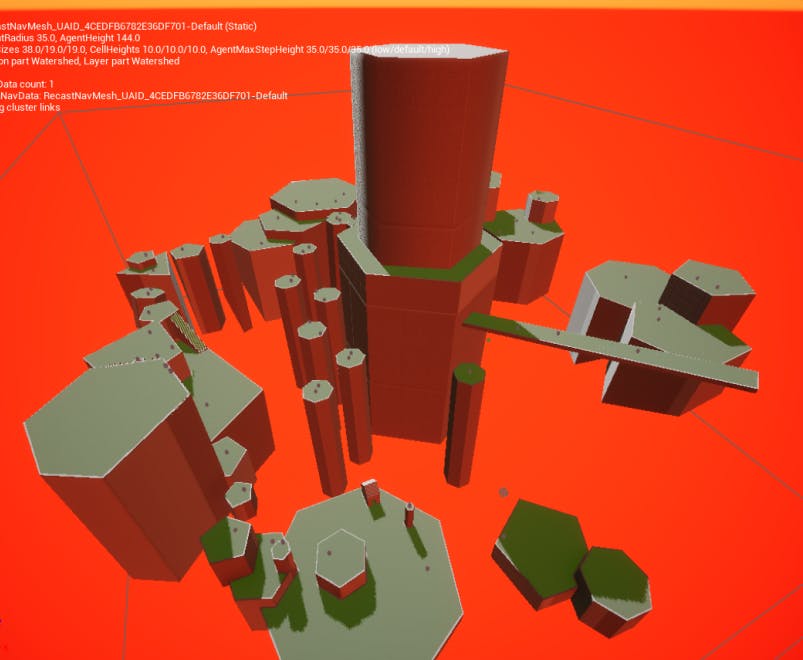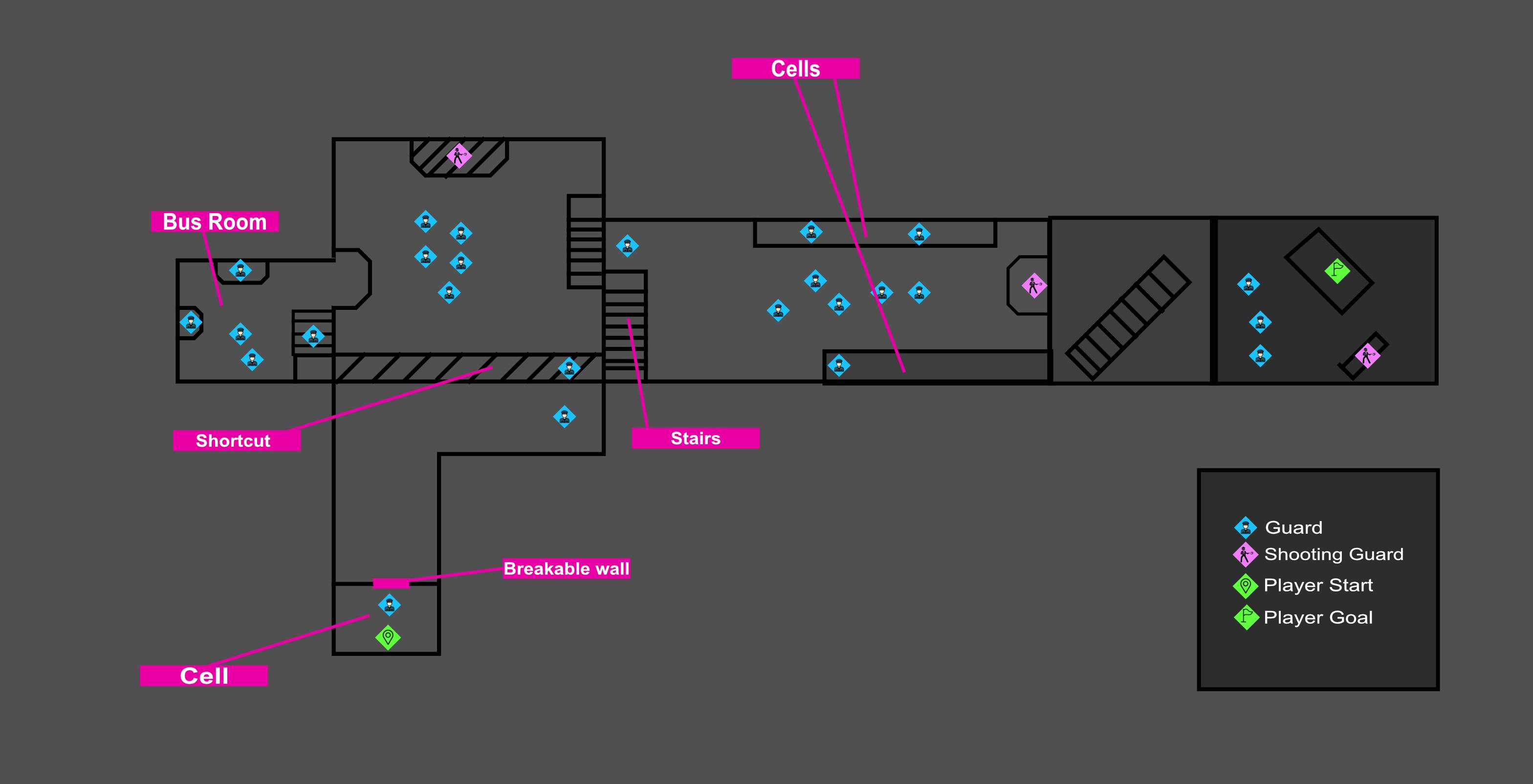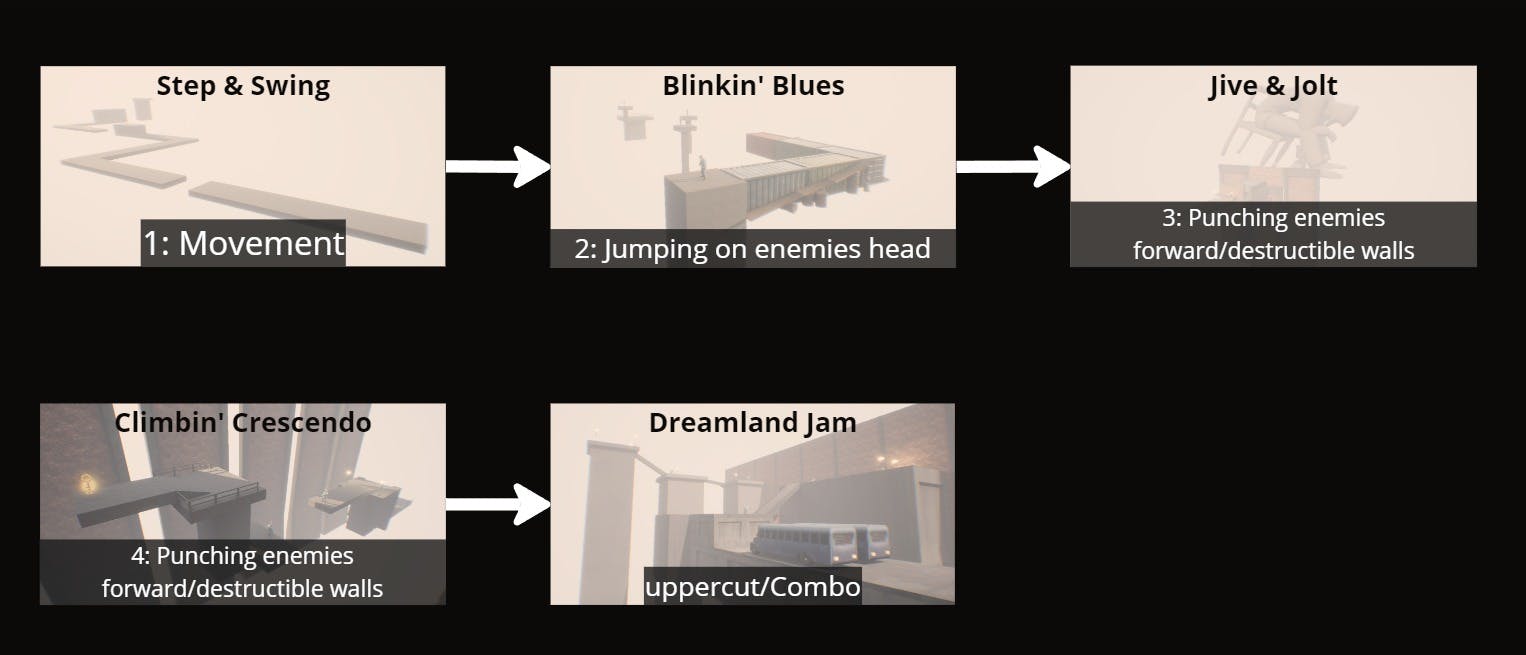Jazz OutJazz Out
- Team Size:
10 people
- Development time:
2024 29 April-14 June (7 weeks)
- Platform:
PC
- Genre:
FPS speedrunning
- Steam link:
- Role:
Level designer
- Futuregames:
GP3
Details
Concept
JAZZ OUT is a blood-pumping speed-running FPS platformer where you use enemies as platforms! Punch guards into the air then jump off their heads to gain momentum. Chain gravity-defying combos, master unique moves, and race against time. Perfect your escape and top the global leaderboard!
Contribution
- -Design and build short levels that let players find new solutions and improve their time.
- -Onboarding.
- -Prototypes and technical implementations such as enemy Design and moving vehicles.
- -Environment art implementations.
My approach
My approach as a level designer to the project was to be agile. I knew the values would never stay the same until the last day. So my goal as a level designer was to find a formula for a type of level that could be created easily and be beaten in different ways with every new level still feeling fresh

Challenges
My first blockout and it's problems
The first blockout I made was short but could be beaten in many different ways, The Problem was that the level was in a confined space and therefore didn't have room for crazy combos or experimentation.

My second blockout and it's problems
During this iteration, we didn't have any limit on the "Blink", so I created a very big level that let the player fly through it. This level felt very different and didn't require the player to think about how they would overcome an obstacle. (Unfortunately, I don't have a video from this iteration)
The third and final iteration
The final size that felt the best landed in the middle of the previous ones, It used multiple paths from the first level but was in an open space like the second level.
No dying rule
One rule we made pretty early in the game was that there would be no dying in the game since it's a risk for the power fantasy we wanted. As a level designer, It took me a long while to figure out how to make it work.
To fix this, I created a blockout where, instead of the player falling to their death, I added a floor filled with enemies. This design allowed players who fell off the fastest path to recover and continue, rather than restarting instantly. This approach eventually became a staple of all the other levels.
Players did not feel stressed
Another problem I noticed during the playtest was that the player did not rush through the level, There was no sense of urgency other than the timer. So I thought about what makes people run for their life... gunshots.
So I made a quick prototype for a shooting enemy that later made It to the final game.
The Great Escape (Level Breakdown)

Goal with level
Since this is the first level after the onboarding, I wanted it to have an easy path and a harder path so players could always come back to the level. My goal with this level was to hide the shortcuts and let the player find them as they played more.
Shortcut
In the video, I break down how I intended the player to improve their time with shortcuts.
Onboarding

I was responsible for the onboarding process. We had many mechanics, and through playtesting, we realized that it was very overwhelming for new players. Therefore, I aimed to make it as simple as possible.
By narrowing down all the mechanics, I could begin building the levels step by step. I wanted them to be short and simple but also replayable.
Telling a story with the onboarding
Since the character is dreaming and waking up I wanted to further enhance that feeling. So I worked closely with the VFX Artist to add effects and post-processing throughout the onboarding to create a dreamy feel. On the first level there was no art asset and then slowly more and more got added, adding more to the feeling of coming back to reality.
Finding the fun
Train Level
Later on in production, I wanted to create a new type of level. A level that would blow the player away. I started working on some ideas and thought of a train level. So I made a quick prototype with Blueprints and a basic block as the train that was following splines.
Though many liked the concept, it couldn't be implemented due to the velocity reset when punching enemies, which clashed with both the level design and the "no dying rule."
Later, inspired by a prison bus mesh from the artist, I reworked the idea, incorporating the bus as a level feature rather than the core mechanic. It wasn't perfect, but it added variety to the game.
what would I have done differently today
A playground to have the rest of the team find the metrics
During early development, every gameplay designer and programmer used different levels to test, which resulted in the game design and values going in different directions. If we had created a playground for testing, I think we could have avoided a lot of clashing.
Working with artists earlier on modular pieces
Me and the other designers were afraid of the metrics changing and I wasn't really aware of the modular workflow at the time. But as soon I got the meshes the level creation became much faster.
Looking back
I had so much fun working on this project. It was challenging because the game constantly evolved, with something new happening every day. The levels didn't look the prettiest, and I didn't play the smoothest, but the freedom to explore and test dumb ideas was far more valuable to me.
The main lessons I learned from this project are:-Working with modular meshes.
-Level designers should never force other departments to compromise. If a level doesn’t work within the current systems, it's better to scrap it than to disrupt the workflow of the entire team.
-Balancing experimentation with knowing when to ground yourself.